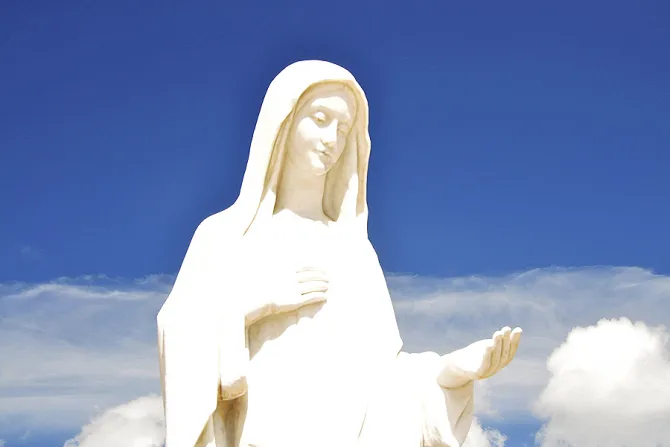Sarajevo, Bosnia and Herzegovina, May 22, 2015 / 14:17 pm
Pope Francis' one-day trip to Bosnia and Herzegovina this June will not include a visit to Medjugorje, the location of controversial alleged Marian apparitions, according to a coordinator of the visit.
Monsignor Ivo Tomasevic, communications officer for the papal trip, confirmed to CNA May 22 that the Pope is only going to Sarajevo on June 6, and not the southern town near the Croatian border where six people claim to have seen apparitions of the Virgin Mary.
Msgr. Tomasevic could not confirm whether any visionaries would be at the papal Mass, but he said any delegation from Medjugorje would be treated like any other parish delegation.
He stressed that Medjugorje is "one of the parishes of the Diocese of Mostar-Duvno, and its faithful will take part in the celebration like faithful of the other parishes of the area, with an equal number of places assigned."
Enzo Manes, the editor of the Magazine "Medjugorje, the presence of Mary," told CNA May 21 that he has been informed that "some of the visionaries will take part in the Mass."
He predicted a "strong" presence from Medjugorje.
The alleged apparitions originally began June 24, 1981, when six children in Medjugorje began to experience phenomena which they have claimed to be apparitions of the Blessed Virgin Mary.
According to these six "seers," the apparitions contained a message of peace for the world, a call to conversion, prayer and fasting, as well as certain secrets surrounding events to be fulfilled in the future.
These apparitions are said to have continued almost daily since their first occurrence, with three of the original six children – who are now young adults – continuing to receive apparitions every afternoon because not all of the "secrets" intended for them have been revealed.
Since their beginning, the alleged apparitions have been a source of both controversy and conversion, with many flocking to the city for pilgrimage and prayer, and some claiming to have experienced miracles at the site, while many others claim the visions are non-credible.
In April 1991, the bishops of the former Yugoslavia determined that "on the basis of the research that has been done, it is not possible to state that there were apparitions or supernatural revelations."
On the basis of those findings the Congregation for the Doctrine of the Faith directed in October 2013 that clerics and the faithful "are not permitted to participate in meetings, conferences or public celebrations during which the credibility of such 'apparitions' would be taken for granted."
In January 2014, a Vatican commission completed an investigation into the supposed apparitions' doctrinal and disciplinary aspects, and was to have submitted its findings to the Congregation for the Doctrine of the Faith.
A source within the Congregation for the Doctrine of the Faith told CNA May 19 that "the conclusions have not been discussed yet at the congregation, neither in a special meeting nor in a regular meeting."
Once the congregation analyzes the commission's conclusions and finalizes a document on the phenomena, the Bishop of Rome will be able to make a final decision.
Speculations about the possible conclusions of the commission led some local residents to think that the Pope might visit the shrine during his one-day trip to Bosnia and Herzegovina.
However, Cardinal Vinko Puljic of Sarajevo, a member of the commission which investigated the apparition, completely dismissed this possibility.
Cardinal Puljic told a May 13 press conference in Sarajevo that the Pope's visit to Sarajevo "has nothing to do with Medjugorje" and its alleged apparitions.
Regarding the investigating commission, Cardinal Puljic stressed: "I cannot speak about it, as I was part of it and I am bound to secrecy."
According to CNA's source in the Congregation of the Doctrine of the Faith, the Vatican's caution around the supposed apparitions is also due to "the exceptional nature of the apparitions."
"It was never the case in history that the Virgin Mary appeared so continuously and so constantly over the years," he said, noting that "the tradition of Marian apparitions show that they are limited to a given period in the life of any visionary."



